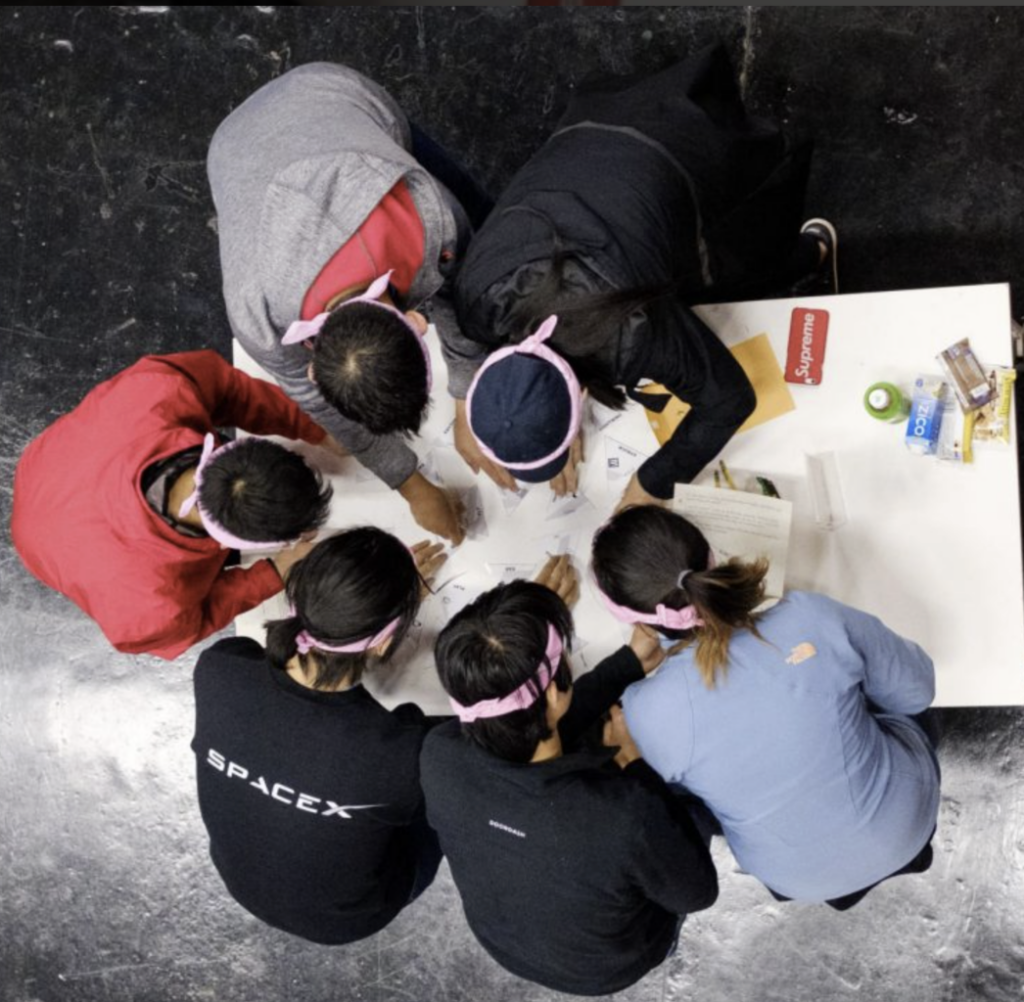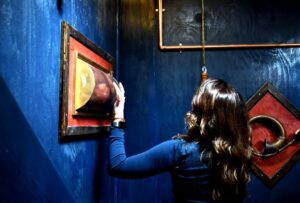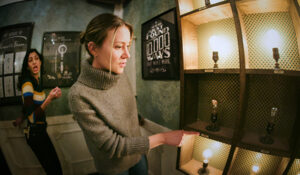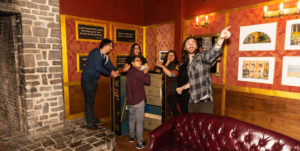Introduction: Moving Beyond the Conventional Team Outing
For corporate planners and executive assistants, the task of organizing a team-building event for senior leadership carries unique weight. The goal is not simply to provide a fun afternoon away from the office; it is to facilitate a meaningful experience that yields a genuine strategic value. Standard activities, while enjoyable, often fail to challenge executives in a manner that reflects the complexity and pressure of their real-world responsibilities. A happy hour rarely reveals how a leadership team collaborates under stress or navigates a multifaceted problem with incomplete information.
This gap between activity and application is where many team-building initiatives fall short. The challenge is to find an engagement that is more than a diversion—one that acts as a catalyst for growth and provides observable insights into team dynamics. A premium, high-fidelity escape room experience should be viewed not as a discretionary expense, but as a strategic leadership development tool. It is a dynamic, real-time laboratory for assessing and honing the critical competencies that define a high-performing executive team, offering a clear and measurable return on investment.
The Palace Games Difference: An Investment in Executive Competency
Not all escape rooms are created equal. A premium experience, like those offered at Palace Games, is fundamentally different from a standard outing. It is an investment in executive competency, designed to test and develop leadership skills in a uniquely immersive environment. This distinction is built on a foundation of deep narrative integration, technological sophistication, and a setting that inspires gravitas: the historic Palace of Fine Arts in San Francisco.
Our experiences are not just a series of puzzles in a themed room; they are intricate, story-driven adventures that unfold across multiple spaces. As detailed in our guide to premium escape rooms, this multi-room, non-linear design mirrors the complex, multi-faceted challenges that executives face daily. Teams cannot simply solve one puzzle and move to the next in a straight line. Instead, they must gather disparate pieces of information, identify patterns, delegate tasks, and synthesize a strategy to move forward—all while the clock is ticking. This structure intentionally contrasts with the simpler, linear puzzles of many standard escape rooms, creating an environment designed to genuinely test a team’s collaborative and cognitive abilities, not just entertain them.
A Framework for Calculating Your Team’s ROI
To justify the investment in a premium team-building event, it is essential to have a practical framework for measuring its return. A well-designed escape room offers a rare opportunity to observe your leadership team in action, providing concrete data points on their performance. Use the following metrics as a tool to evaluate the strategic value of the experience.
Identifying Emergent Leaders In a high-pressure, time-sensitive environment, formal hierarchies often give way to natural leadership styles. The person who steps up to organize information, delegate tasks, or motivate the group may not be the one with the highest-ranking title. These scenarios are invaluable for spotting emergent leaders—individuals who demonstrate leadership capabilities organically. Research from the IEEE highlights how group exercises can be analyzed to detect these influential individuals. For example, you might observe the quiet head of a department naturally taking charge of coordinating information from different puzzles, revealing a talent for synthesis and command that is not always visible in a boardroom.
Practicing Grace Under Pressure An escape room provides a controlled, low-stakes environment to see how senior leaders manage stress and communicate when faced with unfamiliar problems. Do they become frustrated and shut down communication, or do they remain calm and methodical? As noted by Harvard Business School Online, self-awareness and structured decision-making are key to effective leadership under pressure. Observing how your team handles a puzzle that stumps them or a moment of confusion provides a live-action case study of their collective resilience and emotional regulation.
Strengthening Cross-Functional Trust The complex, interdependent nature of the puzzles forces leaders from different departments to rely on each other’s skills. The CFO may need to trust the CMO’s creative interpretation of a clue, while the head of sales must depend on the CTO’s logical process to operate a piece of technology. This forced collaboration breaks down organizational silos and builds cross-functional trust. According to insights from the McChrystal Group, demonstrating competence and benevolence are foundational to building trust. Successfully solving a challenge together creates a powerful shared context that reinforces these bonds back in the office.
Observing Complex Problem-Solving Effective leadership is rooted in the ability to solve complex problems. As outlined in research published by ScienceDirect, assessing these skills requires more than multiple-choice tests; it demands observation in realistic scenarios. The non-linear challenges at Palace Games serve as a live assessment of how your team constructs problems, encodes information, and implements solutions. It reveals their collective approach to synthesizing information from multiple sources to form a coherent strategy, offering a clear window into their executive-level problem-solving capabilities.
The Tangible Returns: A Breakdown of the Investment
Confidence in an investment comes from understanding its value. A private booking at Palace Games, such as for The Great Houdini Escape Room, is a flat fee of $425 for a group of 4-8 players. This figure is not just a ticket price; it is an all-inclusive investment in a focused, high-impact development experience.
This investment secures a completely private experience, ensuring your team can operate without distractions and that the focus remains on their unique dynamics. It includes a dedicated, highly trained Game Guide who facilitates the experience and can provide nuanced observations. Furthermore, the experience duration is significantly longer than industry standards, with rooms like The Edison Room offering a 100-minute adventure. This extended time allows for deeper immersion and more complex challenges, preventing the experience from feeling rushed and enabling more meaningful interaction.
To further enhance the strategic value, the activity can be transformed into a half-day off-site by booking The Game Room for a post-game debrief. This dedicated space allows the team to immediately reflect on their performance, discuss communication breakdowns, and solidify the lessons learned. When framed on a per-person, per-hour basis, the value becomes even clearer. A 100-minute experience for eight executives at $425 equates to less than $55 per person. Compared to other executive development programs, which can cost thousands of dollars per person, such as the $3,600 program detailed by the National Grocers Association, a premium escape room offers a remarkably efficient and effective alternative for leadership assessment and development.
The Intangible Returns: Fostering a Cohesive Leadership Culture
Beyond the observable skills and tangible cost-benefit analysis lies a set of powerful, long-term returns that shape a leadership culture. The most enduring benefit of a high-stakes, shared experience is the story the team creates together. Overcoming a significant, memorable challenge becomes a part of the team’s collective identity, a touchstone they will reference for months and years to come. Research in the Royal Society journal confirms that shared emotional experiences are a powerful catalyst for social bonding.
This shared success has a direct impact on morale and humanizes senior colleagues, allowing them to see each other in a new light outside the confines of their corporate roles. This is critical for building what Harvard researcher Amy Edmondson calls ‘psychological safety’—a shared belief that the team is safe for interpersonal risk-taking. As her work published by Harvard Business School explains, successfully navigating a difficult challenge together builds the foundation of trust required for team members to speak up, ask questions, and challenge ideas back in the office. It is this sense of safety that unlocks higher levels of innovation and performance. The sentiment is consistently reflected in feedback from our corporate clients, who describe their teams as feeling “bonded,” “energized,” and “more connected” after an experience at Palace Games, as seen on our Reviews & Press page.
Conclusion: A Strategic Choice for High-Performing Teams
Choosing a team-building activity for an executive team should be a strategic decision, not a logistical one. Palace Games offers more than an escape room; it is a dynamic, real-time leadership lab designed to sharpen the very skills that define an effective executive team. The immersive, complex challenges provide a unique lens through which to assess communication, problem-solving, and grace under pressure, delivering insights that are difficult to obtain in a traditional office setting.
For senior leaders, the objective should extend beyond simply escaping a room. The true goal is to emerge as a more cohesive, resilient, and self-aware unit. By investing in an experience that is designed to challenge and develop these core competencies, you are not just planning an event; you are making a decisive move toward building a stronger leadership team. Explore our team building experiences and make a strategic choice for your high-performing team.



